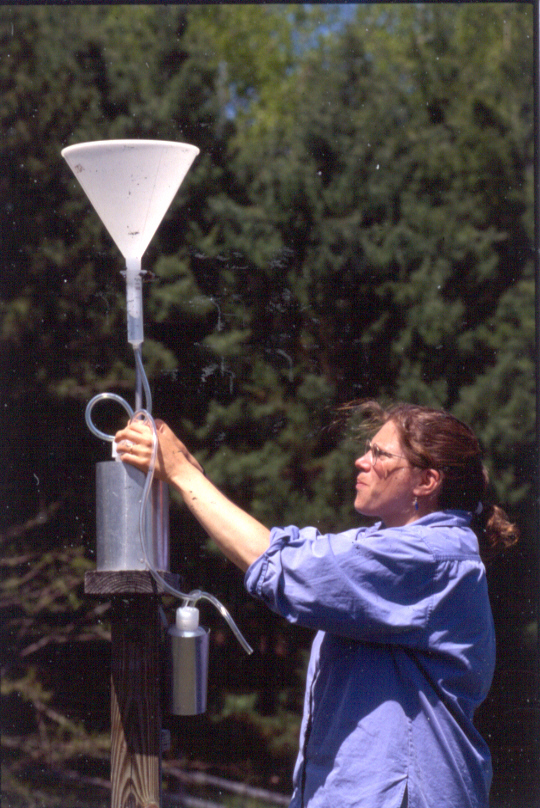In 1955 the Hubbard Brook Experimental Forest (HBEF) in the White Mountains of New Hampshire was established to investigate the surrounding watershed ecosystem. In 1963 the Hubbard Brook Ecosystem Study (HBES) was started by a collaboration of colleagues, later that year they discovered acid rain. Although this area is far removed from urban areas, it’s rain recorded pH measurements that were less than 4, while ordinary rain in this setting is typically expected to be measured around a 5.6. (Oreskes)
Acidic substances such as lemon juice have low pH values and more basic substances have higher pH values; the scale ranges from 0 being the most acidic to 14 being the most basic and 7 being a neutral value. Prior to the 1963 HBES, acidic precipitation brought on by volcanoes and natural phenomena and in areas with high industrial pollution had already been discovered, but anthropogenicly induced acid rain in rural areas had not. In this case, acid rain can be defined as “precipitation that has a pH lower than 5.6 because of human influences such as the burning of fossil fuels.” (Welman)
In Merchants of Doubt by Naomi Oreskes, she addresses the uncertainties that arose in the debate over the researching and policy making process during President Ronald Reagan’s administration. She mentions the Acid Rain Peer Review Panel (ARPRP) that pushed for legislation on policy making that would set limits on nitrous oxide emissions and the opposing parties such as Bill Nierenberg, Fred Singer, and the Reagan Administration who significantly changed the panel’s final report without their knowing. (Oreskes) However, what I found most intriguing about the entire acid rain story is that it was discovered in New Hampshire, the state I grew up in. This persuaded me to look into what is currently going on at the Hubbard Brook Experimental Forest located just two hours North of where I live.
Once a week technicians carefully go out into the woods and collect precipitation samples that accumulate over a seven-day period. The samples are brought back to the lab, measured, and stored in a long-term database. Precipitation is collected though several funnel-shaped tools that open into a storage bottle with an overflow valve and an anti-precipitation design. Once in the lab, the samples are tested for nitrates, Carbon, Nitrogen, conductivity, and pH. Acid precipitation patterns and trends are then examined as well as its effects on animals, plants, trees, soils, streams, and the entire ecosystem as a whole. It has indeed proven to alter soils, cause stress on vegetation, and impair streams and lakes in the North East in recent decades. (Welman)
For more information on any aspects of the HBEF or the HBES, including acid precipitation research, please visit http://www.hubbardbrook.org
Works Cited:
Oreskes, Naomi, and Erik M. Conway. Merchants of Doubt: How a Handful of Scientists Obscured the Truth on Issues from Tobacco Smoke to Global Warming. New York: Bloomsbury, 2010. Print.
Welman, Adam, and Marianne Krasny. “Acid Rain Research at the HBEF.” N.p., n.d. Web. 21 Aug. 2014. <http://www.hubbardbrook.org/6-12_education/Introduction/Intro13.htm>.



Very interesting summary of an important topic, Jackie! Thanks to long-term studies like the work you describe at Hubbard Brook Experimental Forest, we now know that the federal regulations which reduced sulfur emissions have led to reduced sulfate in both precipitation and stream water. It took a lot of research using multiple methods to make the case that acid rain was a new and man-made phenomenon. Check out some of the work we’re continuing to do to document ongoing recovery from acid rain: http://www.dickinson.edu/news/article/1161/remember_acid_rain
Some of our newest findings suggest that changes in weather patterns might be altering long-term trends in recovery from acidification. The study of acid rain (and now the effects of climate change) is still ongoing!